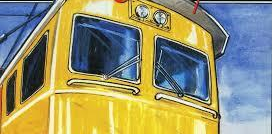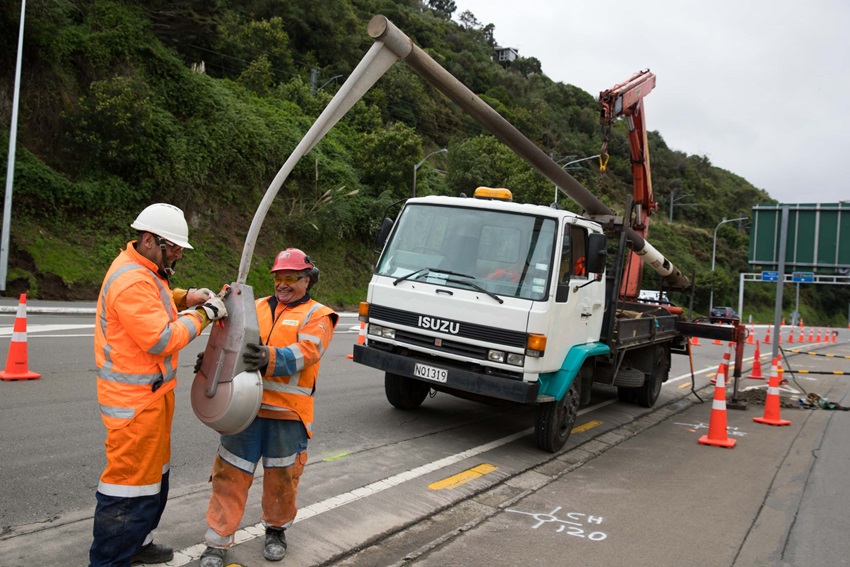Just before Christmas, KiwiRail announced that they would be withdrawing electric freight train services in two years. Their decision is not only at odds with other railways around the globe, but also with global environmental direction.
The timing of the withdrawal will coincide with their newest diesel locomotives arriving from China; but the official rhetoric is that they will not replace the electric locomotives.
The full KiwiRail press release and some commentary is here, but I’d like to expand and break down some of the points in that press release. KiwiRail’s words are in Blue
How many new diesel locomotives will be bought and how much will they cost?
Eight locomotives will be required to replace the EF fleet. The cost is commercially sensitive.
They cost $3.8 million each, 2012 money. (ODT) The first 40 locos were plagued with reliability problems and then asbestos contamination which cost a whopping $12 million to clean up. The asbestos added $300,000 to the cost of each loco, nudging the price to $4.1 million each. You could then add the opportunity cost of the trains not working, and the resulting loss of business, but that would mean facing their real issues.
A big, beefy american train costs about $3 million US dollars or $4.3 million NZD (quick interweb search).
Clearly, buying Chinese means good quality, and also good value.
Why doesn’t KiwiRail buy new electric locomotives?
They would be more expensive and would take longer to get into service. Simply replacing the existing locomotives also would not address the difficulties caused by operating both electric and diesel locomotives on one network, which creates a railway within a railway. It is equivalent to an airline requiring those flying from Auckland to Wellington to change planes at Hamilton and again at Palmerston North.
Balking a the term ‘expensive’ without qualifying it is a cheap shot. A new electric locomotive would cost slightly more than the Chinese-made DL loco, but would be much cheaper to operate over it’s life.
As to this changing planes at Hamilton and Palmy – you’re only changing the pilot/driver, who normally gets out at Hamilton and drives a different train back to Auckland anyway. KiwiRail is making a big deal over the changeover time at Hamilton and Palmerston North, while actively adding hours to the journey time by ditching their road ferries and not maintaining tracks for higher speeds.
Why don’t you electrify the whole North Island system?
It would be very expensive. The cost estimate is $2.5 million per kilometre of single track. Electrifying the parts of the North Island Main Trunk currently not electrified would cost at least $1 billion for the infrastructure alone and feeder lines would still require diesel trains. There are additional complications in that the Wellington electric network uses a different power system to the Auckland electric network.
‘Complications’ between the different overhead wire voltages are fictitious; again KiwiRail are trying to put up a smokescreen. Trains in Europe and Japan commonly operate between two or three different power supplies. Its just not an issue.
The term ‘very expensive’ is Donald Trump rhetoric, and misleading; no infrastructure project is ever cheap. Lets have a look at a few recent transport infrastructure projects – unsurprisingly, roads get the lion’s share.
- Waterview Connection: $1300 million
- Auckland CRL $1200 million
- Christchurch Motorway Projects $800 million
- Kapiti Expressway $660 million
- Transmission Gully $640 million
- New Auckland Trains (Depot, Trains, Electrify) $550 million
- Waikato Expressway$500 million
- Nelson Street Tunnel $240 million
- Dowse to Petone $90 million
- Wellington ‘smart’ motorway $50 million
- Wellington Railway Throat $40 million
So, how would adding electric trains between Hamilton and Auckland fit in that list?
The Auckland Electrification project cost $80 million for 200 km of electrified tracks and supporting infrastructure – a cost of $0.4 million per km of track. So electrifying the mostly double-track, 80 km between Hamilton and Papakura would cost $64 million for 160 km of overhead wire. Seems reasonable given the Auckland Electrification Project was installed in a busier and more constrained environment, with a lot of work on weekends and Christmas shutdowns.
KiwiRail estimate $400 million, we reckon $64 million. Even if it were $100 million, the KiwiRail estimate is four times more.
So if the Hamilton to Papakura electrification costs $100 million, it would fit somewhere at the lower end of the new infrastructure scale; somewhere between the Wellington’s ‘smart’ motorway and the Nelson Street Tunnel project.
Not bad for what would bring a step-change to the transport network, and set the stage for electrifying through the Kaimai Tunnel to Tauranga – when complete, the line will serve 40% of the country’s population and the two largest export ports.
What was the difference in cost between buying new electric or diesel locomotives?
The exact cost of locomotives is commercially sensitive. However the overall costing of the diesel option was estimated at 20% – 30% lower than the overall cost of the electric option over its operational life.
So how much are KiwiRail paying for some Chinese rubbish their diesel trains? When they say “commercially sensitive” they really mean ‘we’re embarrassed to be paying this much for such crap’. KiwiRail locomotives are costing $3.8 million each (as above, ODT) which is a low-ballpark cost for a trains bought from established suppliers in the US or Japan. The cost of KiwiRail’s Chinese locomotives has probably increased since the South African Railways have placed orders with China, but also, and very smartly, hedging their bets with American and European trains too.
After the asbestos was removed from each Chinese loco at a total cost of $12 million, or $400,000 each, the price of each locomotive rises to $4.1 million. A bitter pill when compared with a modern electric loco from Japan cost (yen)400 million or $5 million NZD. The key benefit is that the Japanese locomotive is a mature design while incorporating new-generation technology and systems. The locomotive is plug-and-play for New Zealand.
Claiming that electric trains are more expensive is an ‘interesting’ claim; my guess is that the rubbish Chinese trains only have a 10 – 15 life expectancy, and the lifetime cost of electric trains have been calculated over the same period; making the Chinese locos look cheaper.
Key benefits of electric trains are:
- Fewer moving parts compared with a diesel train – the still have wheels, brakes and a few cooling fans though
- More powerful and faster acceleration
- Chinese trains have a ten year service life, electric trains last 30 years+.
- No exhaust fumes are emitted; good for passenger trains
- Power is cheap, renewable and resilient to oil price shocks, especially in NZ
- In NZ, renewable power is used for electric trains and the price of power is insulated against oil shocks, whereas diesel carries a full-exposure to international fuel prices.
What part in the decision did environmental issues play?
Environmental factors were considered as part of the overall decision, which also looked at operational efficiency and economic viability. When KiwiRail delivers a more consistent and reliable service it encourages more freight to move by rail. Emissions from rail are less than 1% of all transport emissions, with transport accounting for 17% of New Zealand’s overall emissions. A shift to diesel on the NIMT will increase the emission factor for freight carried by rail in New Zealand from 30.80 gms per Net Tonne Kilometre to approximately 34 gms per NTK (The sum of the tonnes carried multiplied by the distance travelled). There is no comparable figure for road freight in New Zealand but the United Kingdom produces an annual figure for Heavy Goods Vehicle. This is currently 114 gms per NTK.
And almost none by electric train.
What will happen to the old electric trains?
They will be decommissioned over a two year period
Not if a Labour-led government is formed “Regional and long distance rail”
















